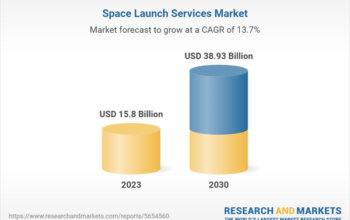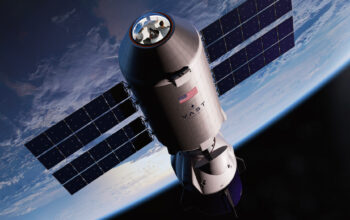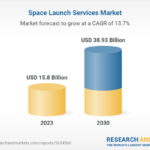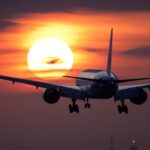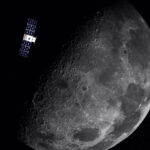Imagine the challenges our best and brightest scientists and researchers face in laboratories around the world as they seek to discover the next big breakthrough in cancer treatment, pharmaceuticals or advanced materials.
Their work will someday save lives through new targeted medicines, develop next-generation semiconductors, and revolutionize the way we produce, transmit and consume energy.
Now imagine the challenges scientists will face in the Orbital Age, when their lab is flying 300 miles above our heads in low-Earth orbit (LEO).
Clicking on the “Read Full Article” link below will auto-scroll you to the full article (same page).
Effective Astronaut Training is Key to The Orbital Age
Imagine the challenges our best and brightest scientists and researchers face in laboratories around the world as they seek to discover the next big breakthrough in cancer treatment, pharmaceuticals or advanced materials.
Their work will someday save lives through new targeted medicines, develop next-generation semiconductors, and revolutionize the way we produce, transmit and consume energy.
Now imagine the challenges scientists will face in the Orbital Age, when their lab is flying 300 miles above our heads in low-Earth orbit (LEO).
Sierra Space is a first mover in the Orbital Age and has already started work on training programs that will enable private sector workers to become researchers and manufacturers aboard new commercial space stations.
President and Chief Science Officer, Dr. Janet Kavandi, herself a former NASA Astronaut, is spearheading the company's effort to create and train such space professionals to do their best work in microgravity.
She leads Sierra Space's Human Spaceflight Center and Astronaut Training Academy, located at NASA's Kennedy Space Center in Florida.
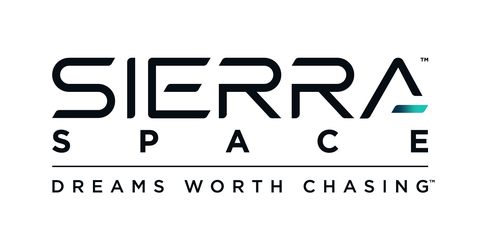
Sierra Space's Human Spaceflight Center and Astronaut Training Academy will recruit, train, and prepare a professional astronaut corps required to support the commercialization of space.
Dr. Kavandi envisions three general categories of astronauts traveling to LEO on the Dream Chaser spaceplane.
The first category will be the professional Sierra Space Career Astronaut.
The other two astronaut categories are for guest flyers: 1) the Specialist Astronaut, which would include scientific researchers, manufacturers, technology developers, etc., and 2) the Experiential Astronaut, which would include those flying primarily to experience the wonder of space for personal reasons.
For all three categories, safety will be the primary focus of training and preparation.
The professional Career Astronaut is analogous to the NASA career astronaut. Candidates will undergo an intensive selection process and arduous training regimen estimated to take three years to complete.
Akin to NASA astronauts, professional Career Astronauts will be tasked with executing and maintaining all operations necessary to keep the Orbital Reef space station, LIFE Habitats, and the Dream Chaser spaceplanes flying in LEO and working at top efficiency.
Such responsibility requires rigorous preparation, including long hours spent underwater in neutral buoyancy pools, countless repetitions in docking procedures and extravehicular activity (EVA) simulations, and ongoing physical conditioning.
Scientists, researchers, and other private sector workers who will travel to orbiting outposts, will not be required to undergo the full scale of training needed by Sierra Space Career Astronauts, according to Dr. Kavandi.
Specialist Astronauts will require considerable training to live and work in space, but they won't require the full range of training that Career Astronauts must successfully complete.
For example, a Specialist Astronaut would likely never perform an EVA to repair a faulty component, nor would they be responsible for docking a Dream Chaser bringing crew and supplies to Orbital Reef.
The third category of astronauts – the Experiential Astronaut – includes people who want to visit Orbital Reef to experience what it is like to live and work in space.
These astronauts will spend up to a week in LEO, compared to months for a Specialist Astronaut and a up to a full year for a Career Astronaut. As a result, their training will be scaled back accordingly.
They will learn the basics of living in space, the essential team skills required for an optimum experience, and be trained on safety procedures, as well as other aspects of living in space.
Still, distinct levels of physical preparation are needed for training all guest astronauts.
Detailed medical exams will be necessary since a health emergency onboard a space station can put everyone at risk.
Additionally, private sector astronauts must learn how to manage daily tasks we take for granted on Earth.
The sheer act of eating in microgravity must be handled thoughtfully and with care.
If not, one's living quarters will quickly resemble a restaurant after a two-year-old's birthday party. Or worse.
Why? In space, everything floats. Yes, this applies to the bathroom, too.
Such training concerns the basics of daily existence in space. But before such preparation can begin, guest astronauts must be examined to ensure they are capable of living and working in space for days or months at a time—both mentally and physically.
Guest astronauts may not face the same rigorous physical demands as professional Sierra Space Career Astronauts.
For example, while physical minimums exist, there is no current age limit for guest astronauts.
If a 70-year-old researcher can meet the training minimums for safety (e.g. egressing the vehicle while fully suited) and maintain their health during a spaceflight, they are welcome.
In fact, the Orbital Age will present wonderful opportunities to guests with some physical disabilities to enjoy a freedom of movement in space unparalleled by any opportunity on Earth.
While physical training may be lessened for guest astronauts, their psychological makeup is equally important.
LEO presents undeniable psychological challenges for which all space flyers must prepare.
Obviously, at the end of a tough day, astronauts can't just take a stroll outside to clear their heads.
Also, even with today's communication breakthroughs, it is still common for those in space to deal with some level of isolation.
Interestingly, one way a candidate can learn to deal with such feelings is to practice camping in the great outdoors.
Taking a small group of people hundreds of miles away from civilization without indoor plumbing and other comforts of modern living may show future space instructors just how candidates will react to living hundreds of miles above civilization, where luxuries are sparse compared to home.
Ultimately, the training regimen for each type of astronaut will be designed to help them reach their goals.
Furthermore, the Human Spaceflight Center and Astronaut Training Academy will utilize a holistic approach.
This means preparation will go far beyond just the individual enrolled. For Specialist Astronauts, their employers will receive assistance in how to effectively manage operations in LEO.
For individuals of all categories, a strong element of support for loved ones will be introduced. (Space travel isn't only a stressful time for those going above; it impacts their entire families.)
When training begins at the Human Spaceflight Center and Astronaut Training Academy, the initial focus will be on professional Career Astronauts who will act as LEO trailblazers, establishing critical infrastructure. Specialist and Experiential Astronauts will soon follow.




